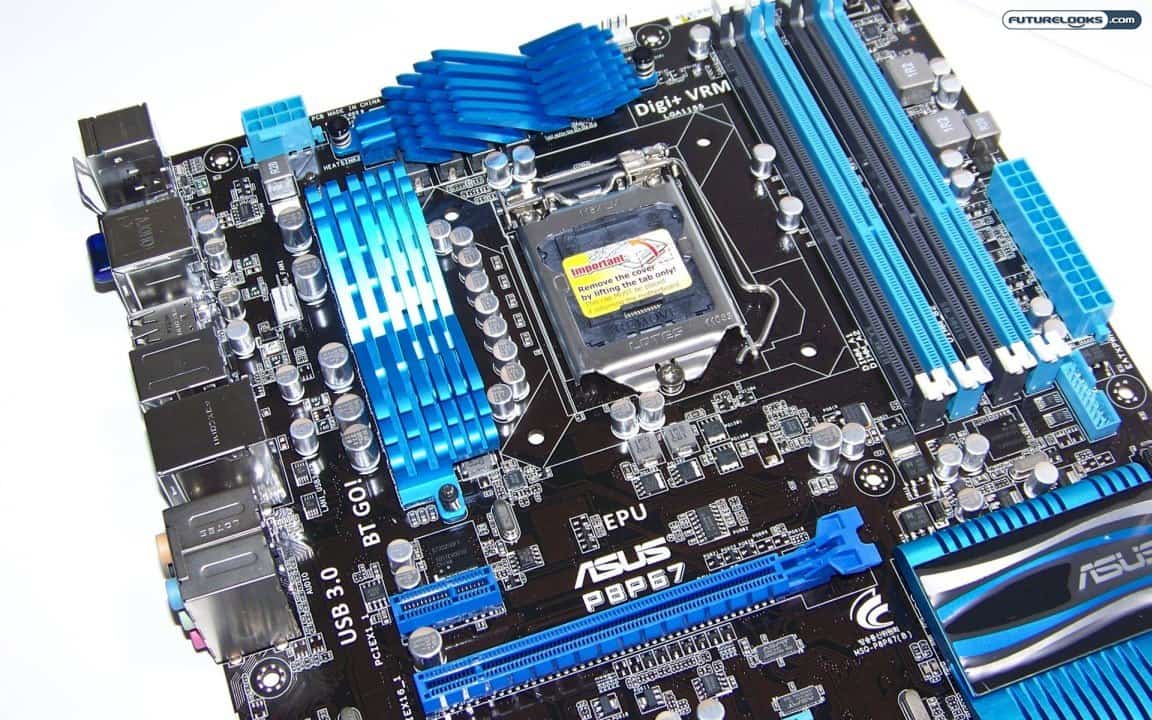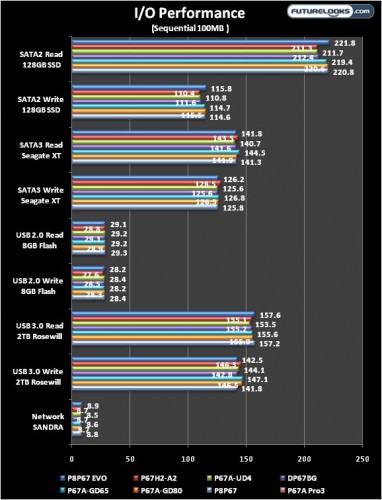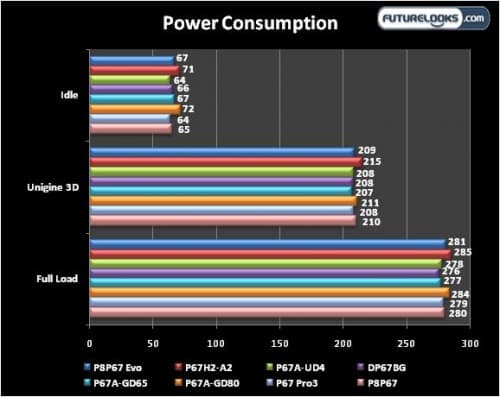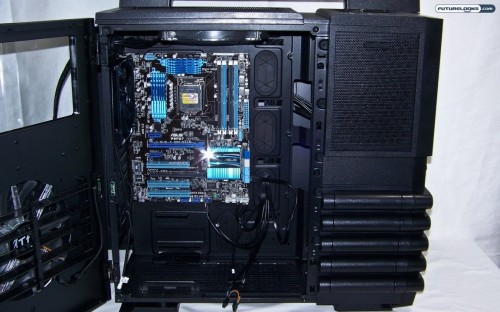I/O Performance
Most motherboards don’t have a lot of variation in this area since they use similar if not identical controllers and drivers. Implementation is usually the number one culprit for sub-par performance. However, some boards may use PLX chips which can add to system bus performance.
Overall, performance is very similar to the P8P67 EVO. What this shows us is that there is little to no difference in implementation when compared to the P8P67. You’re going to get admirable performance and value across the series in this regard.
Power Consumption and Quality Control
Power consumption is key to many green users. While it is important to design a system that uses as little power as possible, it can sometimes show when there’s a little circuit design innovation to push things even lower.
Consumption numbers are close throughout mostly due to the fact that each platform is a derivative of the P67 chipset standard. Some boards consume more as they have slightly higher VRM tuning or more board features that use a little extra voltage. The P8P67 consumes slightly less power than the hungrier performance driven EVO, but only comes up as average overall.
Final Thoughts
The P8P67 “Vanilla Edition” is by far the most aggressive entry level P67 motherboard we’ve seen to date. Despite its low cost, it doesn’t seem to cut out any of the most important features that DIY users and enthusiasts really want or need. There’s plenty of expansion for low cost consumers from USB 3.0 to SATA 6Gbps. And, while it doesn’t support SLI, it is a very strong solution for single NVIDIA card users, or AMD users that wish to dabble in CrossFireX.
But, the journey doesn’t stop there. The P8P67 ability to overclock is quite impressive. It makes very efficient use of the CPU offset voltages quickly pushing the 4.8GHz barrier and nearly matching its bigger EVO sibling. Granted, it might take a little more from supported component voltages, but it’s a further testament to ASUS’ DIY user continuity initiative.
For a prospectively low $145 US/CA, cost effective Intel Sandy Bridge owners can pair their K series unlocked Sandy Bridge processors with the ASUS P8P67’s hidden potential. Given the numbers, the performance, and the overclocking, this is the best $145 you’ll spend. Therefore, this platform carries both our Recommendation and distinction for Value.
Pros
- Top notch performance and stability
- Feature rich continuity
- Up to date expansion and connectivity
- Excellent overclocking and potential
- Very affordable high quality
- Attractive theme
- AMD CrossfireX Support
Cons
- Not for NVIDIA SLI users
Overall Rating: 9.0 / 10.0


Help Us Improve Our Reviews By Leaving a Comment Below!




